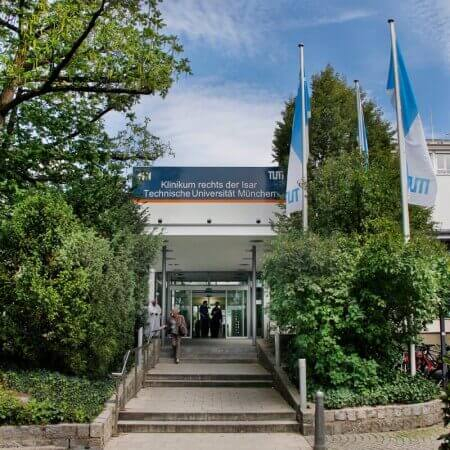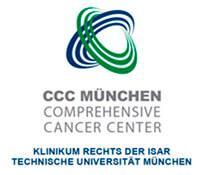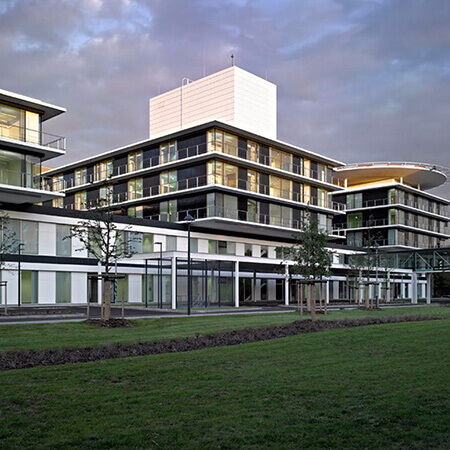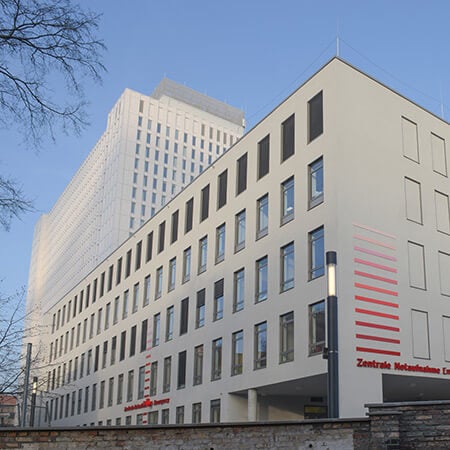More than 400 million people in the world suffer from diabetes mellitus. The number of patients is projected to exceed 600 million by 2040, which is associated with an aging population and an increase in the prevalence of obesity that is the main cause of type 2 diabetes. 25% of patients suffer from diabetic foot. The pathology is characterized by ulcers on the skin or destruction of deep tissues, which are caused by an impairment of their blood supply and/or innervation. You can undergo treatment of this pathology abroad. Healthcare professionals in developed countries use modern minimally invasive methods of restoring blood supply to the foot, which will help patients with diabetic foot not only prevent lower limb amputation, but also save their lives.
Content
- What is diabetic foot
- Diagnostics
- Treatment principles
- Local conservative therapy
- Systemic conservative therapy
- Revascularization
- Surgical debridement
- Why it is worth undergoing treatment in Germany
- Treatment in Germany with Booking Health
What is diabetic foot
The diabetic foot is the destruction of deep tissue with its frequent infection, which is a consequence of diabetes mellitus. There are two mechanisms for the development of pathology:
- Angiopathy – vascular lesions.
- Neuropathy – nerve lesions.
A combination of these mechanisms is also possible.
In about 80% of patients, the leading mechanism for the development of diabetic foot is vascular lesions. This form is often more severe, but it also responds well to treatment. The narrowed blood vessels can be dilated with surgery and endovascular procedures, thereby restoring blood flow to the affected limb.
Angiopathy in patients with diabetes is divided into two types:
- Macroangiopathy – blockage of large blood vessels, which is often the result of the rapid progression of atherosclerosis.
- Microangiopathy – lesions of the small blood vessels.
Macroangiopathy is the closure of the lumen of large arteries, and it plays a key role in the development of diabetic foot. Microangiopathy usually does not lead to a significant decrease in the oxygen levels in the tissues of the foot.
The progression of the diabetic foot is facilitated by:
- High pressure on the tissues of the foot during physical exertion.
- Infection after the appearance of ulcers.
- Formation of blood clots in the area of atherosclerotic plaques.
In diabetics, atherosclerosis of the legs develops earlier, is more severe and is associated with a large number of blood vessels affected by atherosclerotic plaques. 30% of patients with ischemic form of diabetic foot are simultaneously diagnosed with atherosclerosis of the carotid, cerebral, renal and coronary arteries.
Diagnostics
At the stage of clinical examination, the arterial pulse in the foot is assessed. However, tissue palpation is often complicated in deformity of the feet and the presence of edema.
Complaints of patients with a neuropathic form of pathology are pain, burning, numbness, unusual sensations in the legs. At the same time, the ulcer defect itself is painless or painful sensations are minimal. The skin is usually warm, dry, and vascular pulsation is preserved.
With the ischemic form, the skin is cold, pale, pulsation is weak or absent. Ulcers are sharply painful.
Laboratory diagnostics includes:
- Bacterial wound culture.
- Blood tests for carbohydrate and lipid metabolism.
Instrumental diagnostics includes:
- Doppler ultrasound scanning to assess blood flow in the arteries.
- Oximetry (measurement of oxygen levels).
- Angiography of the lower extremities (contrast-enhanced X-ray diagnostics).
- Computed tomography to assess bone and joint involvement.
Treatment principles
Diabetic foot requires a comprehensive approach to treatment. The therapy should be continued for life. The patient will have to adjust his lifestyle in order to prevent the progression of the pathology.
Treatment principles are as follows:
- Unloading the foot to relieve pressure on the skin and deep tissues.
- Elimination of factors that accelerate the progression of atherosclerosis (vascular lesions) – smoking cessation, antihypertensive therapy, lowering cholesterol levels.
- Control of carbohydrate metabolism – hypoglycemic drugs and insulin under the control of glucose and glycated hemoglobin levels in the blood.
- Revascularization – procedures and operations to improve blood circulation in the lower extremities.
- Surgical debridement.
- Local conservative therapy.
- Treatment of infectious complications.
- Closure of defects after surgery (plastic repair with local tissues and transplanted flaps).
Local conservative therapy
Doctors in Germany use the following local treatment methods for diabetic foot:
- Antiseptic treatment.
- Imposition of aseptic dressings with high absorbency.
- Vacuum therapy to cleanse the wound from germs, dead cells, improve blood circulation.
- Unloading of the foot.
Orthopedic shoes, an individual unloading bandage, and crutches are used to unload the foot. The patient is advised to restrict walking. It is necessary to use orthopedic aids instead of bandages in the case of fistulous osteomyelitis, lesions of heel bone and ankle joints.
The treatment with bandages is carried out taking into account the state of blood supply and the stage of the wound process:
- Exudation and inflammation – the goal of treatment is to cleanse the wound, stop bleeding, and suppress bacteria. The treatment involves the use of atraumatic dressings, containing antiseptics and components for bleeding control.
- Proliferation and granulation tissue formation – at this stage, a significant amount of fluid (exudate) is released, and doctors use special dressings that can absorb it. The specialists use hydrogels, foams, and collagen-containing dressings.
- Epithelialization – the use of films and neutral atraumatic dressings.
With large wounds that secrete large amounts of exudate, negative pressure therapy is carried out. It removes excess exudate, improves blood flow, relieves swelling, and accelerates wound healing. The procedure is often used as a preparation for skin grafting or local flap grafting. Vacuum therapy is not used in the presence of purulent foci.
Systemic conservative therapy
Patients take oral drugs both during inpatient and outpatient treatment of diabetic foot. Some medications are used in short courses, while others are used for life.
Doctors prescribe the following medications for diabetic foot with an unlimited long course:
- Statins – to reduce the severity of atherosclerosis.
- Antihypertensive drugs – to normalize blood pressure.
- Hypoglycemic agents and insulin – to control carbohydrate metabolism.
- Antiplatelet agents – after limb revascularization procedures.
The following medications can be used for a limited course:
- Prostaglandins and other vasodilators – if surgeries and procedures for lower limb revascularization are contraindicated.
- Intravenous infusion of solutions – in case of intoxication.
- Antibiotics – for purulent complications.
- Diuretics – when carrying out X-ray guided endovascular procedures, for patients with a high risk of contrast-induced nephropathy (kidney pathology).
Revascularization
In most cases, the diabetic foot is caused by poor tissue blood supply. The improvement of blood flow can be achieved through:
- Endovascular procedures performed through an incision in the groin, from the inside of the blood vessels, under X-ray guidance.
- Open surgery performed through a large incision in the leg.
In countries with poorly developed medicine, open surgical interventions are performed in 90% of cases. Moreover, the majority of patients, even with an ischemic form (caused by poor blood circulation) of diabetic foot do not undergo surgical treatment. Revascularization is performed in only half of the patients with critical limb ischemia, and amputation becomes the first-choice treatment option for 25% of cases.
German hospitals carry out treatment of diabetic foot in a different way. All patients with the vascular form of the disease receive surgical and endovascular treatment. In 80% of cases, the choice is made in favor of minimally invasive endovascular surgery: it provides the same results, but at the same time it is less traumatic, ensures the patient's rapid recovery, a minimal hospitalization period, and a low risk of complications.
Endovascular procedures:
- Balloon angioplasty – dilation of the blood vessels from the inside with an expanding balloon.
- Stent implantation – placement of the frame into the lumen of the blood vessel after its dilation.
The high efficiency of treatment is judged by the patency of the arteries: it should be narrowed by no more than 20%. The normalization of blood flow results in the normalization of the processes of tissue regeneration.
Surgical interventions for lower limb revascularization:
- Open endarterectomy – removal of atherosclerotic plaques from the blood vessel.
- Thrombectomy – removal of a blood clot from the blood vessel.
- Angioplasty – excision of a pathologically altered artery wall with replacement of the defect with grafts, usually xenopericardium (tissues of the bovine pericardial sac).
- Bypass surgery – formation of new blood vessels that are taken from other parts of the patient's body (shunts carry blood bypassing the narrowed area).
Open surgery is rare in Germany. It is used in the case of a significant extent of stenosis and very dense plaques where calcium salts are deposited.
Surgical debridement
The restoration of blood circulation in the lower limb is followed by a radical excision of necrotic tissues, opening and drainage of purulent foci.
Whenever possible, surgical interventions are minor. Many tissues are restored after revascularization. Local immunity improves and regenerative processes are enhanced in the affected area.
After necrectomy, doctors perform plastic surgery using local tissues and skin grafts transplanted from other parts of the body. A high-quality plastic stage of the operation allows the doctors to preserve the aesthetics of the foot. In the case of infectious complications, the skin is transplanted only at the stage of recovery: after the formation of a large amount of granulation tissue in the wound.
Amputations are extremely rare abroad. If this operation is carried out, then in the minimum volume. Even if gangrene develops, the lower extremity can be saved in most cases.
Why it is worth undergoing treatment in Germany
The diabetic foot is characterized by a progressive course. Without quality treatment, the disease will inevitably lead to lower limb amputation. To avoid the removal of a large amount of tissue or foot amputation, the disease should be treated by the best specialists, with the use of advanced techniques.
Treatment in Germany has the following benefits:
- Most patients are treated with revascularization procedures and surgeries, including distal and small vessels.
- In 80% of cases, the treatment is carried out using a minimally invasive technique instead of a major surgery through long incisions.
- The use of stent implantation, which provides an additional reduction in the risk of recurrence as compared to balloon angioplasty alone.
- The treatment of wounds involves the use of an ultrasound method, which is more sparing.
- The very latest types of dressings are applied, taking into account the stage of the wound process.
- Surgical repair of defects with soft tissues and skin grafting are performed after the elimination of inflammation and the formation of granulation tissue in the wound.
- Comprehensive treatment of diabetic foot with improvement of the clinical course of diabetes and reduction of cardiovascular risks.
Treatment in Germany with Booking Health
To undergo treatment for diabetic foot in one of the German hospitals, you can use the services of the Booking Health company. On our website, you can see the cost of treatment in Germany and compare prices in different hospitals in order to book a medical care program at a favorable price. Treatment in German hospitals will be easier and faster for you, and the cost of treatment will be lower.
You are welcome to leave your request on the Booking Health website. Our specialist will contact you and provide all the necessary information about treatment in Germany. Booking Health will fully organize your trip abroad. We provide the following benefits for you:
- We will choose the best medical hospital for the treatment of diabetic foot in Germany, whose doctors specialize in this disease and achieve the best results.
- We will help you overcome the language barrier and establish communication with the attending physician.
- We will reduce the waiting time for the medical care program. You will undergo treatment on the most suitable dates for you.
- We will reduce the prices. The cost of treatment in a German hospital will be reduced due to the lack of overpricing and additional coefficients for foreign patients.
- We will take care of all organizational issues: we will draw up documents, meet you abroad and take you to the hospital, book a hotel, and provide interpreting services.
- We will prepare a program and translate medical records. You do not have to repeat the previously performed diagnostic procedures.
- We will help you keep in touch with the hospital after the completion of treatment in Germany.
- We will organize additional diagnostic examinations and treatment in a German hospital, if required.
- We will buy medicines in Germany and forward them to your native country.
Your health will be in the safe hands of the world's leading doctors. The Booking Health specialists will help you reduce the cost of treatment, organize your trip to a German hospital, and you will only have to focus on restoring your health.
Authors: Dr. Nadezhda Ivanisova, Dr. Sergey Pashchenko
















